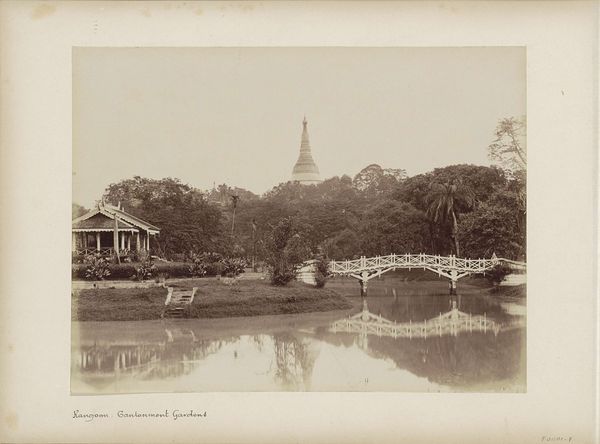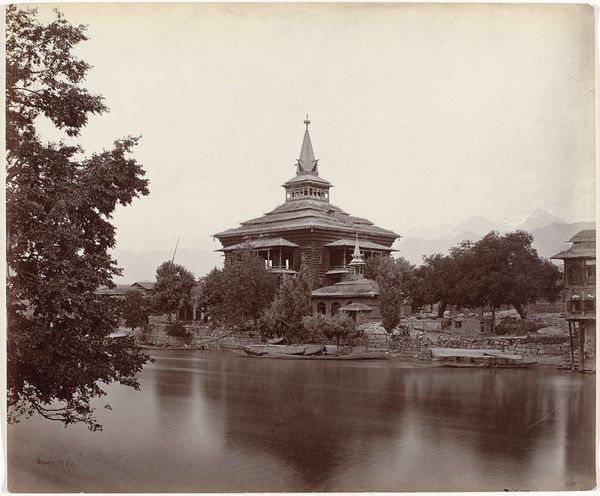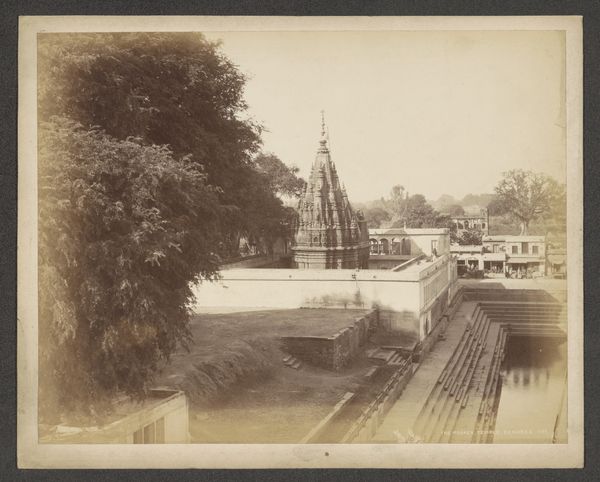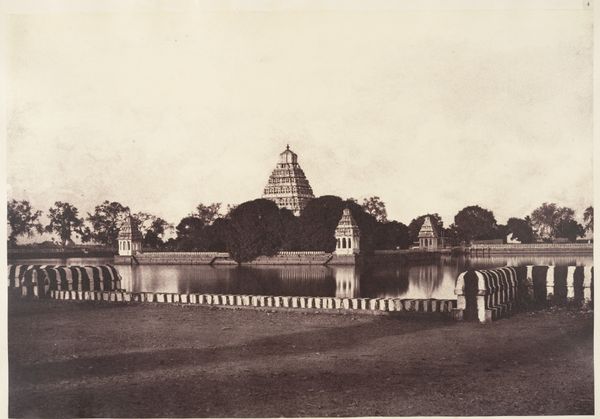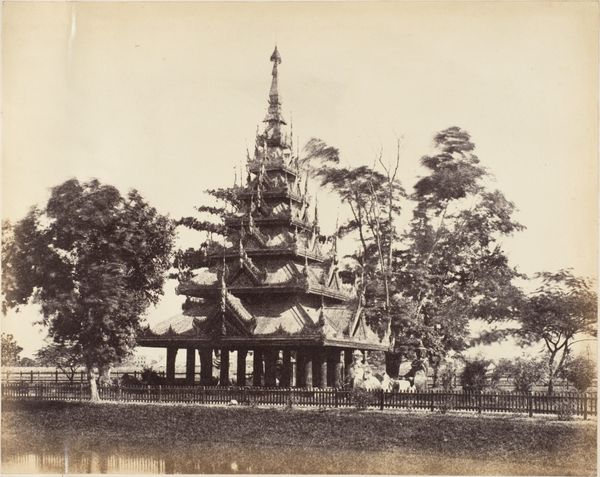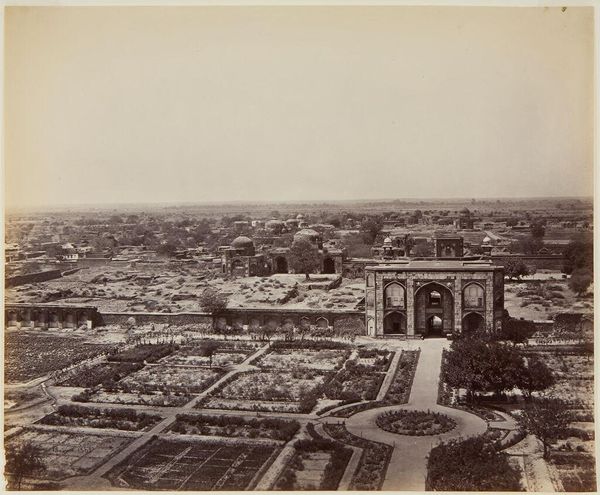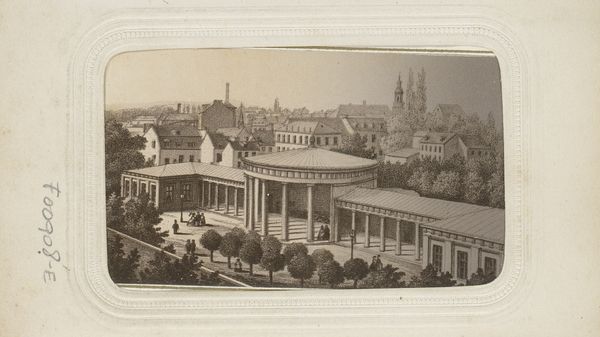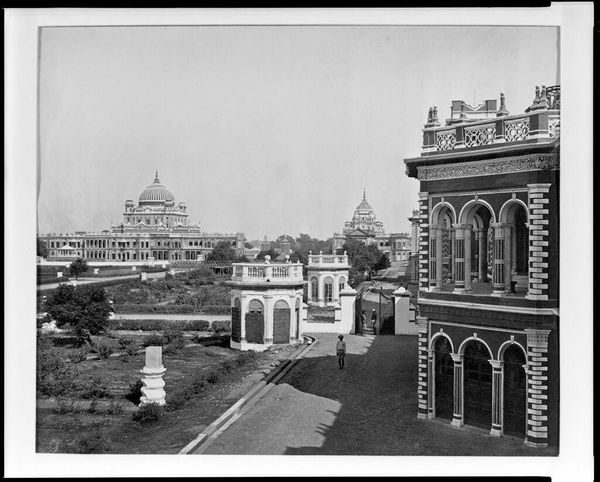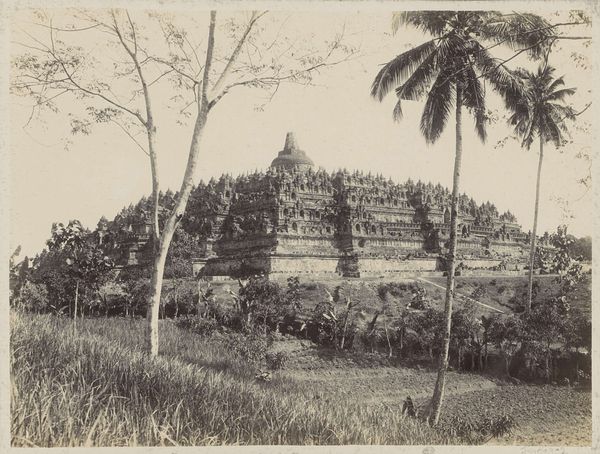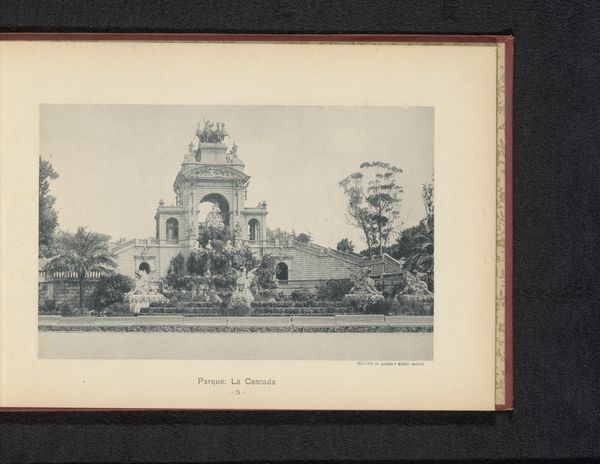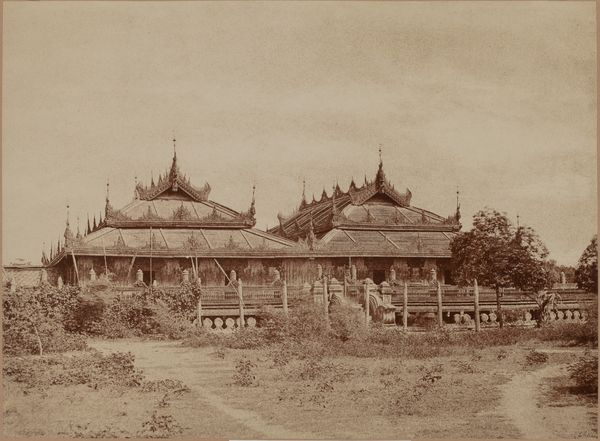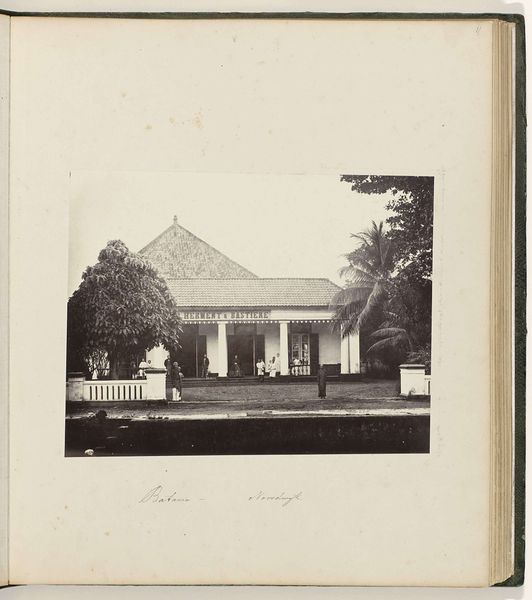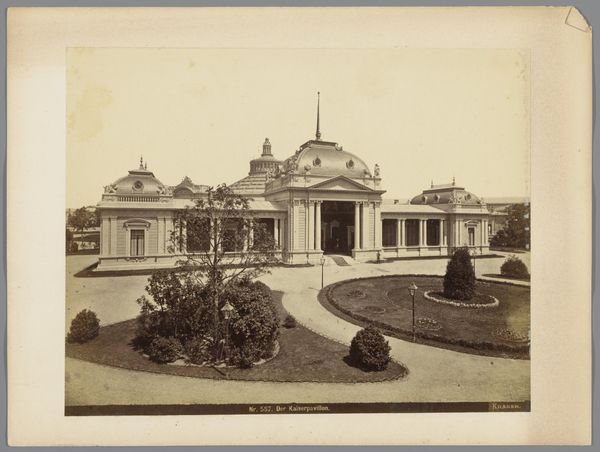
photography, albumen-print
asian-art
landscape
photography
orientalism
cityscape
albumen-print
Dimensions: height 206 mm, width 273 mm
Copyright: Rijks Museum: Open Domain
Editor: So, here we have a photograph by P. Klier, titled "Gezicht op Fytche Square in Rangoon met in het midden de Sulepagode," taken around 1885-1886. It's an albumen print. The scene feels… staged. What strikes you about it? Curator: What’s fascinating is how this image functions as a document of colonial production. Look at the albumen print process itself – requiring specific materials, skilled labor, and a global trade network. How does the photographer, Klier, use this technology to portray Rangoon? Editor: I see what you mean. It’s not just capturing a scene; it’s about controlling the narrative, right? Curator: Exactly. Consider Fytche Square itself. Its very name indicates a colonial imposition. The photograph isn't simply presenting a "view"; it's actively constructing a view. How does the arrangement of the pagoda alongside what appears to be European-style architecture affect your understanding? Editor: The juxtaposition is pretty stark. It's almost like a visual representation of the meeting – or clashing – of cultures. So you're saying the photograph itself is a product of this colonial system? Curator: Precisely. The photographer, the materials, the composition – all are tied to economic and political power structures. What can the albumen print tell us about consumption habits of photographic images at the time? Editor: Thinking about it like that really changes my perspective. I guess I was initially drawn to the seemingly straightforward scene, but now I see it as a much more complex artifact. Curator: Indeed, a material witness to a specific historical moment. Recognizing that makes us reconsider photographs less as transparent windows, and more as constructed objects reflecting labor, exchange, and the uneven power dynamics of colonialism. Editor: I'll definitely look at these kinds of photos differently now. Thanks!
Comments
No comments
Be the first to comment and join the conversation on the ultimate creative platform.
